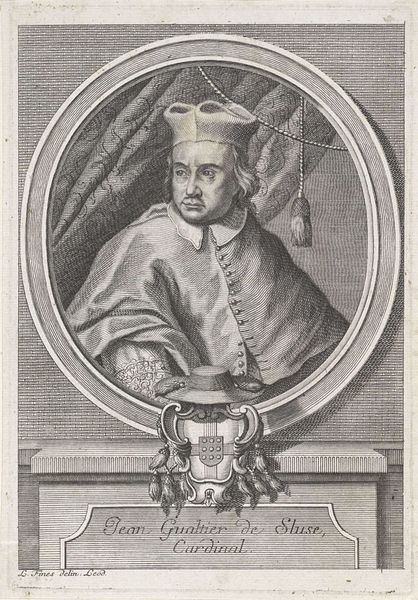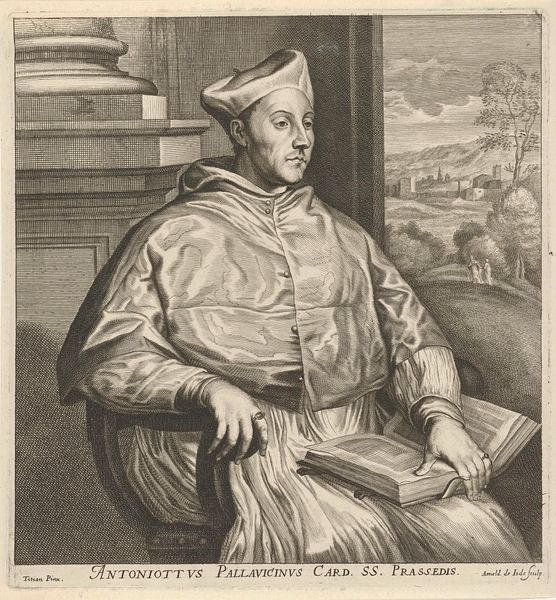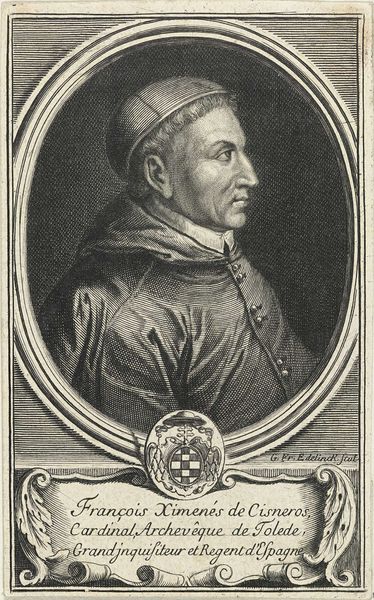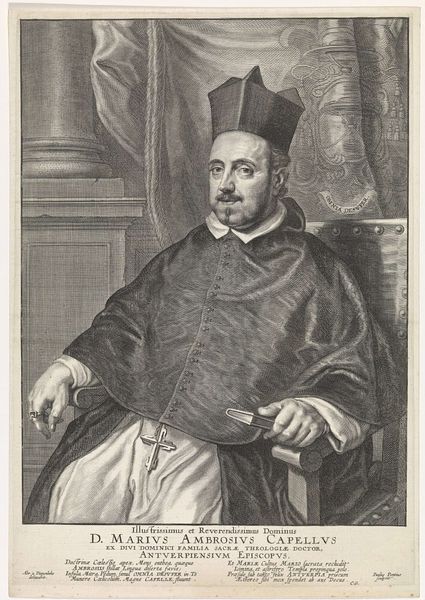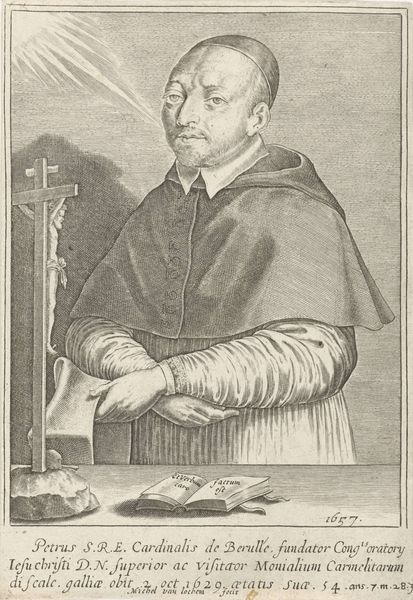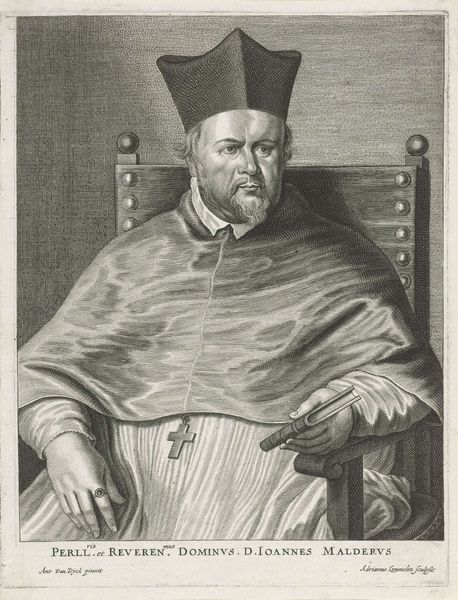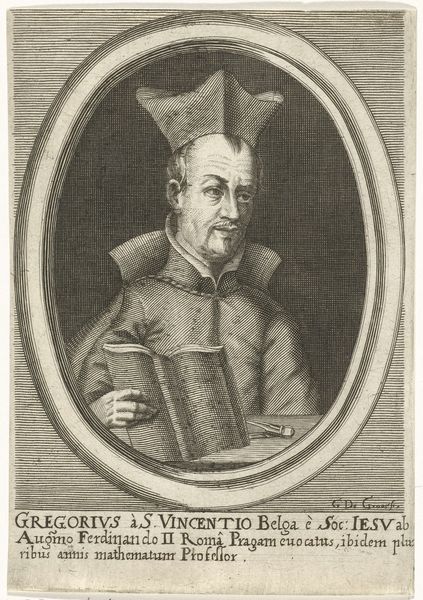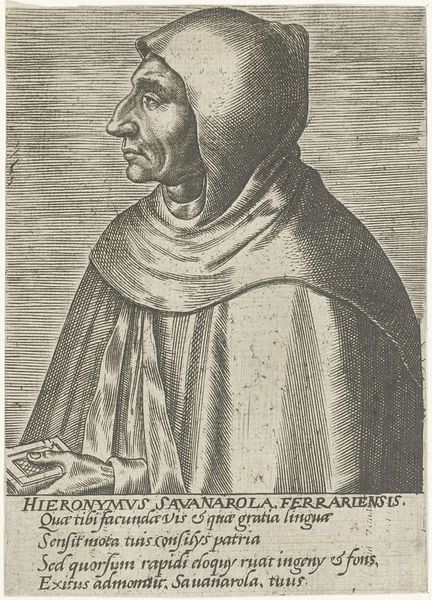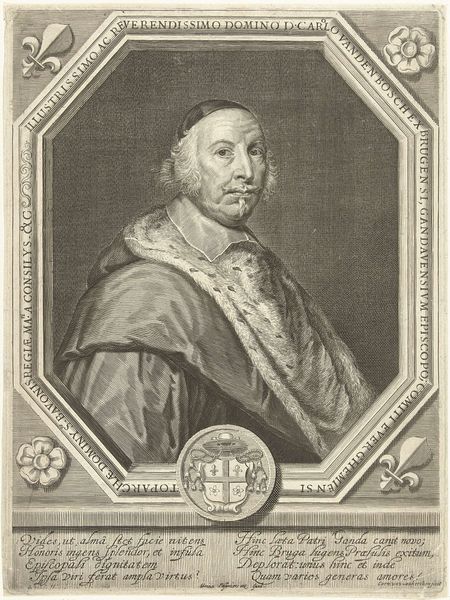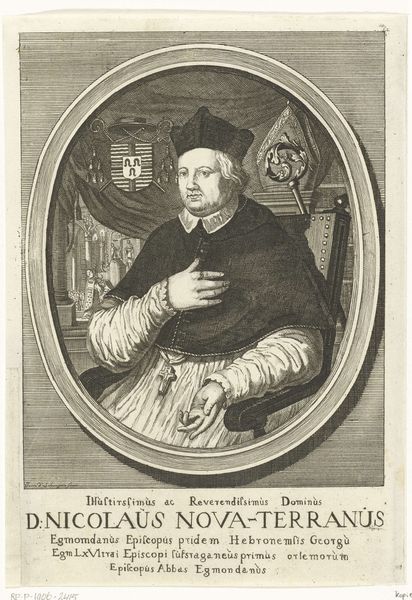
engraving
#
portrait
#
baroque
#
academic-art
#
engraving
Dimensions: height 263 mm, width 197 mm
Copyright: Rijks Museum: Open Domain
Editor: This engraving, "Portrait of Abbot Judocus Gillis" by Coenraet Waumans, probably made sometime between 1633 and 1673, is striking. It feels formal, of course, but also somehow…theatrical? What's your take on this work? Curator: Theatrical is a great word! Waumans captures the gravitas expected of an Abbot. The elaborate drapery, the architectural setting glimpsed in the background, even the meticulously rendered folds of his garments – they all contribute to a sense of carefully constructed authority. He looks rather pious, clutching the book. It is a theatrical *portrait* after all! How do you think the artist’s choices regarding composition shape our understanding of Abbot Gillis's role? Editor: I guess framing him with the architecture elevates him, makes him part of something larger, more permanent…like the Church itself. The contrast with the softness of the drapery behind is interesting, too. Curator: Precisely! And notice the intricate detail achieved through the engraving technique. Every line contributes to the overall impression of power and importance. This wasn't just about capturing a likeness; it was about conveying status and unwavering dedication to faith. Are we getting a PR feel to it? Editor: Definitely. It’s a carefully crafted image, meant to project a very specific message. Something almost propagandistic perhaps? I hadn't really considered that. Curator: Perhaps! But what better medium is there for subtle and nuanced propaganda than through art. We need to remember the social, religious, and artistic conventions of the time. So, what has this peek into Abbot Gillis' portrait revealed? Editor: I'm seeing how much a portrait can tell you about the sitter and the world they lived in. And that there's often a lot more going on beneath the surface than I initially thought!
Comments
No comments
Be the first to comment and join the conversation on the ultimate creative platform.
